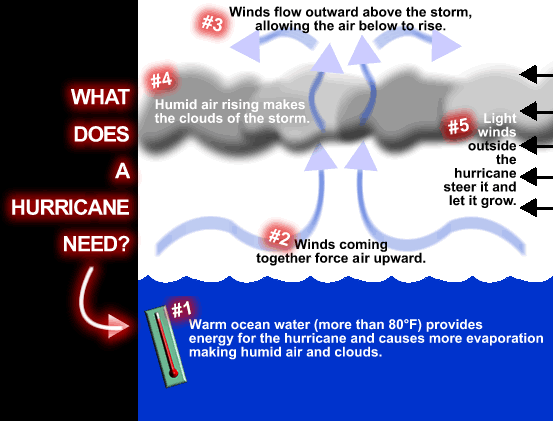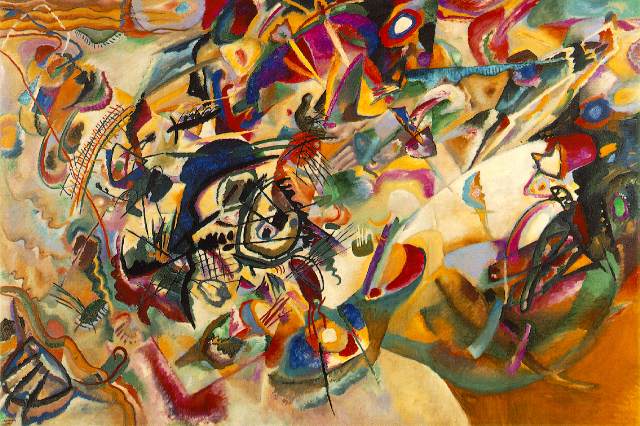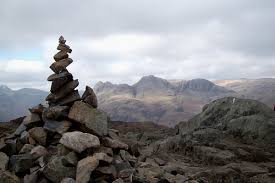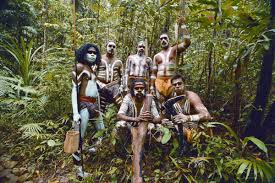Do you read or hear any news about ethical issues? What exactly is ethics? Ethics, also known as moral philosophy, is a branch of philosophy that involves systematizing, defending, and recommending concepts of right and wrong behavior. This week, in my class, we're talking about ethical issues in war, economic and social. So, I will talk more about them on this post.
We all know that human beings have been fighting each other (war) since prehistoric times. War is a peculiar human activity, in that it can bring out some of our best traits, such as courage and self-sacrifice, yet also elicit tremendous cruelty and suffering. It’s therefore a prime candidate for ethical reflection. The ethics of war starts by assuming that war is a bad thing, and should be avoided if possible. It is impossible to think of wars without thinking about right and wrong, but Geneva convention has some rules of war that people can lead on it. The drawback of war is people who are being affected by it, called as refugees. Refugees have experienced unimaginable horrors and terrible losses, which may include imprisonment, physical torture; beatings, electric shock, burning, asphyxiation, and genital trauma.
Psychological torture, including threats, isolation, mock execution, forced witnessing of torture or execution, and sleep deprivation
Witnessing the murder of family members and friends
Forced labor
Forced military service
Rape
Starvation and malnutrition
(havent finished yet, will be finished soon tonight)
Thursday, April 26, 2012
Thursday, April 12, 2012
Hurricanes
Hurricane
A tropical cyclone, known as a hurricane, is a low-pressure system that produces strong winds and heavy rain beginning to brew over the ocean. Intensified by the warm water of the ocean, if it is above 80 Fahrenheit (26.5 Celsius), a tropical storm is officially called ‘hurricane’ when the wind reaches a speed of 74 miles per hour (119 km/h). These winds rotate around the calm part “the eye“, which is approximately 20-30 miles wide and may extend over 400 miles. Its immense size and speed is what makes hurricanes to one of the most dangerous and destroying natural disasters.

A tropical cyclone, known as a hurricane, is a low-pressure system that produces strong winds and heavy rain beginning to brew over the ocean. Intensified by the warm water of the ocean, if it is above 80 Fahrenheit (26.5 Celsius), a tropical storm is officially called ‘hurricane’ when the wind reaches a speed of 74 miles per hour (119 km/h). These winds rotate around the calm part “the eye“, which is approximately 20-30 miles wide and may extend over 400 miles. Its immense size and speed is what makes hurricanes to one of the most dangerous and destroying natural disasters.

Contents:
- How to name hurricanes
- How to measure the strength of hurricanes
- Incidence of hurricanes
- Top 5 largest hurricanes in the United States
- Ways to stop hurricanes
- Organizations responsible for hurricane safety
- Important items to have ready
Hurricane names are determined by the World Meteorological Organization (WMO) in Geneva. The WMO is in charge of updating the six weather regions of the world. The National Hurricane Center created six list of hurricane names for Atlantic Tropical Storm that are maintained and updated by the WMO through an international voting committee. The lists contain French, Spanish, Dutch, and English names. The six list are kept in constant rotation, such as the 2010 name list will be used again in 2016.
Names of hurricanes included all alphabets except Q, U, X, Y and Z, because not enough names using these.
How to measure the strength of hurricanes
All Hurricanes are dangerous, but some are more dangerous than others. To make comparisons The National Oceanic and Atmospheric Administration's hurricane forecasters use a scale which assigns storms to five categories.
The scale that is used to meassure the strengh of hurricanes is called "The Saffir-Simpson Hurricane Wind Scale" and it was originally developed by wind engineer Herb Saffir and meteorologist Bob Simpson. It is a 1 to 5 categorization based on the hurricane's intensity. This scale has been an excellent tool for alerting the public about the possible impacts of various intensity hurricanes.
The scale provides examples of the type of damage the hurricane could cause:
| Category | Winds | Effects |
|---|---|---|
| One | 74-95 mph | No real damage to building structures. Damage primarly to unanchored mobile homes, shrubbery, and trees. Also, some coastal road flooding and minor pier damage |
| Two | 96-110 mph | Some roofing material, door, and window damage to buildings. Considerable damage to vegetation, mobile homes, and piers. Coastal and low-lying escape routes flood 2-4 hours before arrival of center. Small craft in unprotected anchorages break moorings. |
| Three | 111-130 mph | Some structural damage to small residences and utility buildings with a minor amount of curtainwall failures. Mobile homes are destroyed. Flooding near the coast destroys smaller structures with larger structures damaged by floating debris. Terrain continuously lower than 5 feet ASL may be flooded inland 8 miles or more. |
| Four | 131-155 mph | More extensive curtainwall failures with some complete roof strucutre failure on small residences. Major erosion of beach. Major damage to lower floors of structures near the shore. Terrain continuously lower than 10 feet ASL may be flooded requiring massive evacuation of residential areas inland as far as 6 miles. |
| Five | greater than 155 mph | Complete roof failure on many residences and industrial buildings. Some complete building failures with small utility buildings blown over or away. Major damage to lower floors of all structures located less than 15 feet ASL and within 500 yards of the shoreline. Massive evacuation of residential areas on low ground within 5 to 10 miles of the shoreline may be required. |
Examples of the 5 Hurricanes categories:
Category 1: MINIMAL - 1988 Florence
Category 2: Moderate - 1985 Kate
Category 3: Extensive: 1983 Alicia
Category 4: Extreme: 1992 Andrew
Category 5: Catastrophic: 1969 Camille
A new way to measure hurricane strength: underwater microphones
New interesting concept: To measure the strength of hurricanes, place some underwater microphones around the Atlantic.This idea was developed by Nicholas C. Makris and Joshua D. Wilson, two researchers at the Massachusetts Institute of Technology. They say this could be a cheaper way to monitor storms. Several microphones would be permanently placed around the ocean. Scientists have found a strong correlation between underwater sound levels and storm intensity. When the eye passed over the microphone, the sound level increased. This idea is still being developed.
Incidence of hurricanes
According to NASA there are about 85 hurricanes, typhoons and tropical cyclones worldwide every year.
Top 5 largest hurricanes in the United States
Here are the five largest hurricanes in US as measured by intensity; first is the Great Labor Day Storm on September 1935 in Florida, second is Hurricane Katrina on August 2005 in Louisiana and Mississippi, third is Hurricane Camille on August 1969 in Mississippi, SE Louisiana, Virginia, and the next is Hurricane Andrew on August 1992 in Florida and Louisiana, and the fifth is Category 4 Hurricane turned Indianola into a Ghost Town in 1886.
Ways to stop hurricanes
After the wake of Katrina the goverments began to see hurricanes as national security threats. The question will be if any new techniques could change a hurricane’s path or minimize its wind speed to reduce Category 5 storms to Category 4, and so on. Several Scientists answered: “YES".
But those ideas haven’t made it into labs yet. In other to make a simple explanation: a hurricane requires three conditions to form: warm ocean water, evaporation, and spiraling winds. The idea was to inhibit one or more of these conditions in order to decrease the severity of a storm. Some ideas were: pumping cold water from the depths of the sea to the surface or impeding evaporation by dispensing a thin layer of alcohol over the surface of the ocean.
This ideas are not developed yet but the awareness is growing inside the government. The cost of a single Andrew was $30 billion and Katrina was $100 billion. So, from that moment on these studies are being considered an investment for National security.
Organizations responsible for hurricane safety
Federal Emergency Management Agency (FEMA) monitors imminent disasters and they send out alarms via media or if necessary they even put on a siren or make phone calls. They help people but they can't force people out of their homes if they don't feel threatened.
Federal Emergency Management Agency (FEMA) monitors imminent disasters and they send out alarms via media or if necessary they even put on a siren or make phone calls. They help people but they can't force people out of their homes if they don't feel threatened.
Both FEMA and Center for Disease Control (CDC) give advice on their web sites how you should prepare for a hurricane and what you always should have prepared in case of an emergency, sometimes the disaster happens so fast that the only thing you have time to bring is the thing you have prepared.
Important items to have ready
Important papers to bring with you are social security cards, ID-card, birth certificates, high school diplomas or GED certificates. These things are hard to replace and it takes a long time to do it as well, and it's good to have an ID-card if you need to identify yourself to show that you are alive.
Other things you need is batteries, flashlights, at least a gallon of water, 3 day supply of food(canned food that can hold without refrigerator), battery radio, first-aid kit. This is a good thing to have if your going to be sitting in a safty room for a few days.
Thursday, April 5, 2012
Representational Art & Non-Representational Art
There are 2 types of art in painting, they are representational art and non-representational art. Representational art used to describe a work of art, means that the work depicts something easily recognized by most people or resemble the object in artistic way. People usually consider this art as figurative art. On the other hand, non-representational art has no resemblance to any real object. It maybe just geometric shapes or bands of color. There is no identifiable objects or people inside the paintings. It's more like an abstract art.
Painting 1. Representational Art

Painting 2. Non-representational Art

I believe you can find the difference between these paintings that being attached. Like I said, in painting 1 you're be able to recognize the objects inside the painting, such as an eagle is flying, there are some plants, it looks like in dessert, and look at the sky! We all understand what the painter is trying to say to us in this painting, whereas in picture 2, we dont. There are only variety of some color, and some geometric shapes that these all make us not to be able to think what this painting is all about. That's why for this non-representational art painting is also being called as an abstract art.
Tuesday, April 3, 2012
Cairns, Queensland, Australia.
Australia is divided into six states and two territories – Queensland, New South Wales, Victoria, South Australia, Tasmania, Western Australia and the Australian Capital Territory and the Northern Territory. The nation is governed by a federal government based on the Westminster System in the capital of Canberra.
The city of Cairns is located on the northeast coast of Australia in the state of Queensland about 2500km from Sydney by road.

According to Tourism Australia, the Cairns region is the fourth-most popular destination for international tourists in Australia after Sydney, Melbourne and Brisbane.
Cairns is the jewel in Australia's tropical crown, being a popular holiday location for locals & tourists alike. With it's warm climate & amazing scenery, it's a fun & beautiful city to visit.
Bordered by the Great Barrier Reef, where you can swim, snorkel, dive and sail the World Heritage-listed Great Barrier Reef, a living masterpiece so big it can be seen from outer space. Explore the rainbow-coloured coral islands and marine life below.
 \
\
Great Barrier Reef

And also bordered by the mountains of the Great Dividing Range and a number of nearby attractions, there is no shortage of things to do in Cairns.

The peak of Cairn Mountain
Moreover, if you are an adventure person, seeking for it or looking to connect with aboriginal experiences or people, you can stop by at the oldest tropical rainforest, The Daintree Rainforest.
.jpg)

Several shopping centres of various sizes are located throughout Cairns. The largest of these are Cairns Central shopping centre, located in the central business district, and Stockland Cairns, located in the suburb of Earlville.
Cairn Shopping Centre

Cairns Night Market
The city of Cairns is located on the northeast coast of Australia in the state of Queensland about 2500km from Sydney by road.

According to Tourism Australia, the Cairns region is the fourth-most popular destination for international tourists in Australia after Sydney, Melbourne and Brisbane.
Cairns is the jewel in Australia's tropical crown, being a popular holiday location for locals & tourists alike. With it's warm climate & amazing scenery, it's a fun & beautiful city to visit.
Bordered by the Great Barrier Reef, where you can swim, snorkel, dive and sail the World Heritage-listed Great Barrier Reef, a living masterpiece so big it can be seen from outer space. Explore the rainbow-coloured coral islands and marine life below.
 \
\Great Barrier Reef
And also bordered by the mountains of the Great Dividing Range and a number of nearby attractions, there is no shortage of things to do in Cairns.
The peak of Cairn Mountain
Moreover, if you are an adventure person, seeking for it or looking to connect with aboriginal experiences or people, you can stop by at the oldest tropical rainforest, The Daintree Rainforest.
.jpg)
Several shopping centres of various sizes are located throughout Cairns. The largest of these are Cairns Central shopping centre, located in the central business district, and Stockland Cairns, located in the suburb of Earlville.
Cairn Shopping Centre

Cairns Night Market
Subscribe to:
Posts (Atom)
